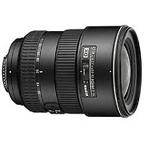Reviews:
ReporterWorld provides a variety of safety equipment, identification products, specialized high-visibility clothing, pertinent news, product reviews, book reviews and useful links specifically for reporters, writers, assignment editors, news correspondents, journalists, ENG crews, photographers, production staff, directors, segment producers, media security personnel, and freelancers: in short, anyone who is part of the news gathering, information reporting, or documentary film industries.
In this section we review various products and services of relevance to reporters, writers, correspondents, ENG teams and production staff. These products include cameras and accessories; computer hardware and software; scanners; printers; books and other products. Smaller, mini-reviews, are also available in other sections of this site including Products, Books and Movies.
We are constantly adding additional reviews to this section. If you have any suggestions for other products you would like us to review, simply e-mail us using the feedback address on our Terms of Service page. Please supply us with as much information as you can about the product (including name, manufacturer, model number) or book (including title, author, ISBN and publisher).
 Product: AF-S DX Zoom-Nikkor 17-55mm f/2.8G IF-ED
Product: AF-S DX Zoom-Nikkor 17-55mm f/2.8G IF-ED
Manufacturer: Nikon
Relevance: The AF-S DX Zoom-Nikkor 17-55mm f/2.8G IF-ED is a high quality wide-angle zoom lens for use exclusively with Nikon's DX-Format digital SLR cameras.
Review: Nikon's AF-S DX Zoom-Nikkor 17-55mm f/2.8G IF-ED is designed for use with the company's DX-Format digital SLR cameras. We used one recently with a Nikon D2Hs, a pro-level SLR, and received impressive results.
At first glance, a traditional SLR camera and a digital SLR are pretty much identical. Both have the same look and, to a large degree, feel, but under the photographic hood, the two devices are completely different from each other.
The main difference, of course, is how the two cameras "see" their respective images. Traditional cameras expose an image on a fragile piece of chemically coated film that is later subjected to additional chemicals to "develop" the finished picture or slide. A digital camera, on the other hand, uses a powerful sensor chip to capture the image and some rather fancy electronics to process and store the picture.
Yes, both need highly sensitive lenses to capture images and focus them tightly on a very small area. But since the two types of cameras render images so differently, doesn’t it make sense that lenses be made specifically for digital cameras as well as traditional ones?
Enter Nikon’s new DX Nikkor line of lenses, ones specifically designed for digital camera usage. The DX series provides photographers who use Nikon digital equipment greater wide-angle coverage in their shots to compensate for the "narrowing" effect of a traditional lens when used on a digital SLR.
This is not to say that traditional lenses can't be used on Nikon's digital SLR, but the DX series is the first set of lenses specifically created for digital camera technology.
The DX lens family
There are currently four DX Nikkor lenses in the company's line-up. These include:
1. The AF DX Fisheye-Nikkor 10.5mm f/2.8G ED lens is a frame filling fisheye with a 180° angle and the ability to focus down to 0.14m (approximately 5.5 inches). It weighs 305 grams (about 11 ounces).
2. AF-S DX Zoom-Nikkor 12-24mm f/4G IF-ED (2.0x), an ultra wide-angle zoom lens with built-in SWM and an M/A mode to quickly switch between autofocus and manual operation. The significance of SWM (silent wave motor) is that it converts what Nikon calls "traveling waves" into rotational energy used to focus the optics quickly and quietly. It weighs 465 grams (just over a pound).
3. AF-S DX Zoom-Nikkor 17-55mm f/2.8G IF-ED (3.2x), another SWM-equipped lens (like the AF-S DX Zoom-Nikkor 12-24 mm f/2.8G IF ED) – but with an increased zoom capability. This is the lens we reviewed with Nikon's D2Hs.
4. AF-S DX Zoom-Nikkor 18-70mm f/3.5-4.5G IF-ED (3.8x), a further extension of the family. This lens offers still additional zoom capability and SWM technology for fast and quiet shooting. This lens weighs 390 grams (just under 14 ounces).
Installing the AF-S DX Zoom-Nikkor 17-55 mm f/2.8G IF-ED is an easy matter. One simply removes the protective cap from the lens, carefully aligns the lens flange with the appropriate camera markings, then twists (and locks) the lens onto the camera body. Inexperienced photographers can perform the entire operation in fewer than 20 seconds. Photogs with a bit of field work under their belts can easily halve this time.
The lens construction of AF-S DX Zoom-Nikkor 17-55 mm f/2.8G IF-ED is comprised of 14 elements in 10 groups. The closest focusing possible with this lens is 0.36 meters (approximately 14.5 inches). The picture angle is equivalent to 25.5-82.5mm.
Mixed environments
Strictly speaking, photographers in mixed environments (i.e., traditional film and digital) should not be mixing lenses from one system to the bodies of another. Thus, Nikon does not recommend the use of DX Nikkor lenses with traditional 35mm or IX240 format cameras.
To understand why this is we have to remember that the physical film size in a traditional camera is slightly larger than the current CMOS sensor technology used in digital cameras. If the two technologies created identically-sized images, there would be little or no problem. Alas, this is not the case.
Sure, you can use most lenses originally designed for traditional cameras on your digital SLR because the traditional lens will focus the image and slightly magnify it onto the smaller CMOS surface. This is why most photographers don’t really see the big deal in using a traditional lens on a digital camera.
Using a DX lens with a traditional camera body, however, will create images that are "too large" for the traditional camera’s film size, resulting in (slightly) cropped pictures. Of course, you would likely only notice this cropping effect if you compared the same picture shot with two equivalent lenses under identical conditions.
Filters and other accessories
If you need to color or UV filter your work, you will need to know that the filter attachment size is 77mm (like the F-S DX Zoom-Nikkor 17-55 mm f/4G IF-ED). This, however, is different from the 67 mm filter size of the AF-S DX Zoom-Nikkor 17-70mm f/3.5-4.5G IF-ED lens. The AF DX Fisheye-Nikkor 10.5 mm f/2.8G ED uses a rear attachment filter style.
Nikon has thoughtfully provided a lens hood (Nikon part #HB-31), but this is not compatible with other DX lenses in this series. That said, we found the lens hood does indeed help to minimize stray light, reduce flare and reflections and ghosting. One of our reviewers also thought the lens hood made the camera look "cooler". Clearly, an unattended benefit from the functional uses of the hood and perhaps a sign he needs a few days off from doing product reviews.
We would have liked to see a lens case being included with the AF-S DX Zoom-Nikkor 17-55 mm f/2.8G IF-ED lens. This would help photographers protect their lens investment without making yet another. Alas, while you can purchase a few different cases for your AF-S DX Zoom-Nikkor 17-55 mm f/2.8G IF-ED, none is included.
Size-wise, the AF-S DX Zoom-Nikkor 17-55 mm f/2.8G IF-ED is compact and lightweight, at least in comparison to other pro lenses we've reviewed. The lens measures 85.5mm by 110.5mm and weighs in at approximately 750 kilograms (about 1.7 pounds). This, we thought, made it substantial enough for years of reliable field work yet won't feel like a brick at the end of the shooting day.
Overall
We were impressed by the accuracy and precision of the optics involved with the AF-S DX Zoom-Nikkor 17-55 mm f/2.8G IF-ED. The lens' high levels of light transmission, even under low light conditions as well as its low levels of chromatic aberration, make it an ideal choice for photographers who need a good quality, general purpose lens exclusively for their Nikon digital camera. Recommended.
End of Review
Have your say.
If you wish to comment on this review, you can do so from our Terms of Service page..
Read other reviews.
If you wish to return to the main Reviews page, please click here.






